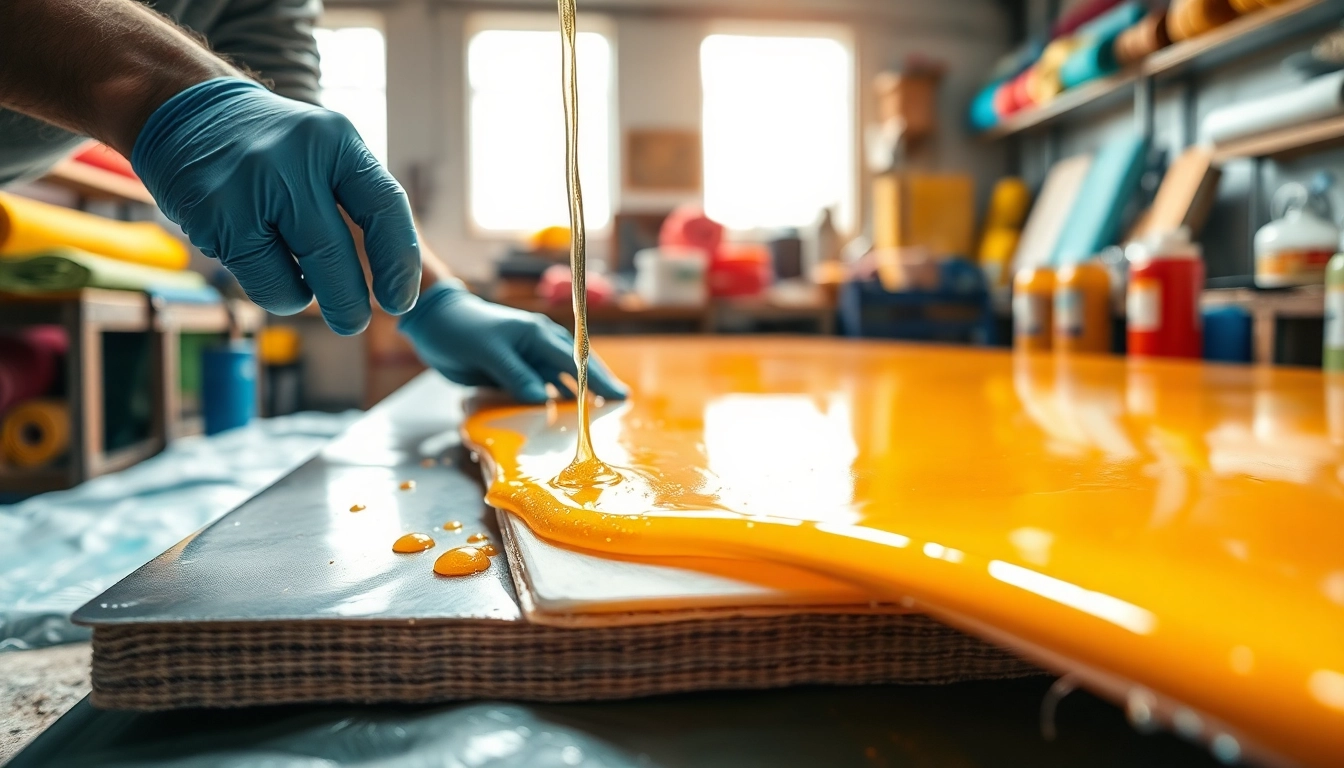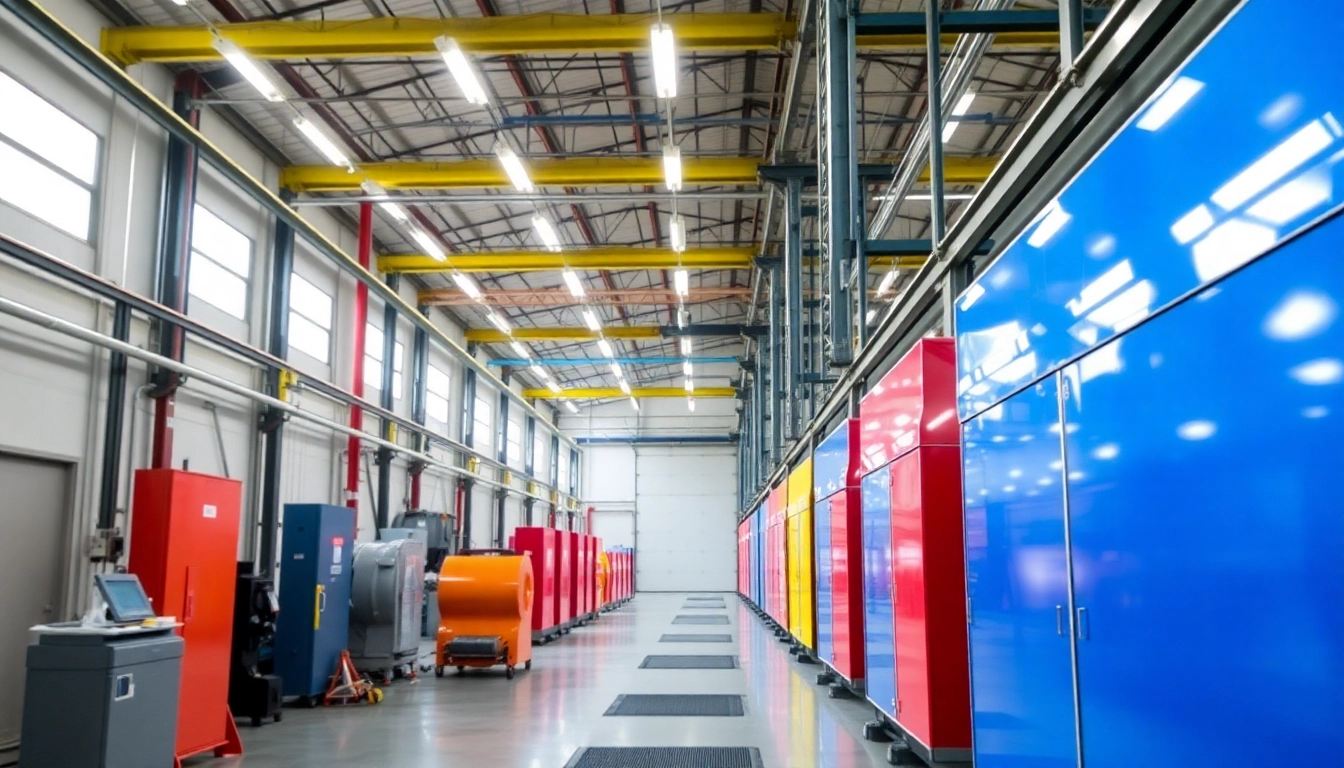An Introduction to Laminating Resin
Laminating resin is a versatile material widely used in various industries for creating durable and lightweight composite structures. It serves as a binding agent in the layering of fiberglass and other reinforcing materials, making it essential for applications ranging from marine construction to automotive parts. Understanding the fundamentals of laminating resin, including its types, properties, and applications, can greatly enhance the quality and longevity of finished products. In this comprehensive guide, we will delve into the intricacies of laminating resin, covering essential techniques for its use, advanced practices, and crucial safety considerations.
What is Laminating Resin?
Laminating resin is a synthetic resin specifically designed for laminating fibrous materials like fiberglass, carbon fiber, or aramid. This resin is typically a two-part system that combines a resin component and a catalyst or hardener, allowing it to cure and solidify. Once cured, laminating resin provides a strong and durable finish, making it ideal for high-stress applications where structural integrity is paramount.
These resins can be categorized into various types, including polyester, epoxy, and vinyl ester, each with distinct characteristics and benefits suited to different applications.
Types of Laminating Resin
Laminating resin can be broadly categorized into three primary types: polyester, epoxy, and vinyl ester. Understanding their differences can help users choose the right resin for their specific needs.
Polyester Laminating Resin
Polyester laminating resins are commonly used due to their cost-effectiveness and ease of application. They cure quickly and are typically used for boat building, automotive applications, and general repair tasks. Polyester resin is less versatile than epoxy and has a lower resistance to moisture, chemicals, and UV degradation.
Epoxy Laminating Resin
Epoxy laminating resins offer superior adhesion, strength, and flexibility compared to polyester resins. They are better suited for applications requiring high mechanical properties and resistance to environmental degradation. Epoxy resins are commonly used in aerospace, automotive, and high-performance marine applications. However, epoxy resins are generally more expensive and require precise mixing and application techniques.
Vinyl Ester Laminating Resin
Vinyl ester resins combine the properties of both polyester and epoxy, providing excellent corrosion resistance, low shrinkage, and good adhesion to substrates. They are commonly used in marine environments and for applications where resistance to water and chemicals is crucial.
Basic Properties and Benefits
Each type of laminating resin possesses unique properties that cater to various manufacturing requirements. Here’s a closer look at the basic properties and benefits:
- Strength: Laminating resins provide excellent structural integrity, particularly when combined with reinforcing fibers.
- Lightweight: Composite materials made with laminating resins are significantly lighter than metals, making them ideal for applications where weight savings are critical.
- Durability: Once cured, laminating resin forms a resistant layer that can withstand harsh environmental conditions, chemicals, and physical stress.
- Versatility: Different formulations allow for customization based on specific needs, such as transparency for aesthetic applications or enhanced waterproof capabilities.
- Easy to Work With: Laminating resins can be easily applied using various methods such as hand layup, spray-up, or vacuum infusion.
Essential Techniques for Using Laminating Resin
Utilizing laminating resin effectively requires understanding the essential techniques for preparation, application, and finalization. Here we’ll explore the best practices to achieve optimal results.
Preparing Your Workspace
Before starting any project with laminating resin, proper preparation of your workspace is crucial. Here are essential steps to consider:
- Clean Work Area: Ensure your workspace is clean and free of dust, debris, and contaminants that could affect adhesion.
- Ventilation: Work in a well-ventilated area to avoid inhaling fumes from the resin and hardener.
- Protect Surfaces: Use drop cloths or protective sheeting to safeguard surfaces from spills and drips.
- Gather Tools: Ensure all necessary tools, such as brushes, rollers, mixing containers, and protective gear, are readily available.
Mixing and Application Techniques
The mixing and application of laminating resin are crucial steps that directly impact the final quality. Here are best practices:
- Follow Manufacturer Guidelines: Always adhere to the specific mixing ratios provided by the resin manufacturer, as incorrect ratios can lead to improper curing.
- Thorough Mixing: Mix the resin and hardener thoroughly to ensure the chemical reaction occurs uniformly.
- Layering Technique: Apply the resin in thin layers, allowing each layer to partially cure before adding additional layers for optimal adhesion.
- Use Proper Tools: Choose the correct application tools such as brushes or rollers according to the project’s specifics—fine brushes for detailed work and rollers for larger areas.
Common Mistakes to Avoid
Adequate knowledge of common mistakes can save time and resources. Here are pitfalls to avoid:
- Poor Mixing: Inadequate mixing can lead to uneven curing and weakened bonds.
- Neglecting Temperature: Temperature can dramatically affect curing times. Ensure that the workspace is within the specified range for optimal results.
- Ignoring Safety Precautions: Always wear appropriate safety gear, including gloves and masks, to protect yourself from harmful chemicals.
Applications of Laminating Resin in Various Industries
The versatile nature of laminating resin lends itself to numerous applications across various industries. We’ll explore some prominent uses of this material.
Marine Industry Applications
The marine industry extensively uses laminating resin for constructing sturdy yet lightweight boats, yachts, and other watercraft. Here’s how it features in the sector:
- Boat Hulls: Laminating resin, when applied with fiberglass, creates durable hulls that can withstand harsh marine environments.
- Repairs: Laminating resin is commonly used to repair damaged fiberglass components, allowing for seamless restoration.
- Custom Fabrication: Enthusiasts and professionals alike use laminating resin for creating custom parts and modifications to enhance performance.
Automotive and Aerospace Uses
Laminating resin is widely used in the automotive and aerospace industries for its strength and lightweight properties. Applications include:
- Composite Panels: Laminating resin is utilized in making lightweight composite panels that contribute to reduced overall vehicle weight, enhancing fuel efficiency.
- Structural Components: In aerospace, high-strength laminating resins are used to fabricate critical structural components that must meet stringent safety standards.
- Prototype Development: Engineers and designers frequently use laminating resin for creating prototypes, allowing for rapid development and testing of new designs.
Crafts and DIY Projects
Beyond industrial use, laminating resin has found its place in crafts and DIY projects, allowing hobbyists to unleash their creativity. Some notable uses include:
- Art Projects: Artists often use laminating resin to encapsulate objects, create a glossy finish, or build layered artworks.
- Home Improvement: DIY enthusiasts apply laminating resin for various home improvement projects, from table coatings to intricate woodworking.
- Jewelry Making: Laminating resin is popular in jewelry making for creating unique pieces that feature embedded designs or materials.
Advanced Best Practices for Laminating Resin
For users who wish to elevate their laminating resin projects, understanding advanced practices is key. This involves paying attention to environmental conditions, layering techniques, and finishing methods.
Temperature and Humidity Considerations
Temperature and humidity greatly influence the performance of laminating resin. Here’s what you need to know:
- Ideal Conditions: Aim for a temperature range as specified by the manufacturer, usually around 70-80°F (21-27°C), and ensure humidity levels are within recommended limits to promote proper curing.
- Cold Weather Precautions: In colder conditions, resin may require heating or the use of special additives to achieve adequate curing.
- High Humidity Effects: Excess moisture in the air can lead to improper curing and surface defects, so monitor conditions carefully before and during application.
Layering Techniques for Strength
Implementing effective layering techniques can significantly enhance the durability and strength of your projects:
- Overlap Layers: Ensure that each layer overlaps with the previous layer to create a strong mechanical bond.
- Controlled Application: Apply resin evenly and avoid over-saturation to prevent drips and sagging.
- Time Between Layers: Follow the recommended times between layers to allow for optimal bonding without fully curing the previous layer.
Finishing Touches and Curing Methods
Finalizing projects with laminating resin involves careful attention to finishing techniques:
- Sanding and Polishing: Once cured, sanding followed by polishing can provide a smooth, glossy finish; consider using progressively finer grits for the best results.
- Clear Coating: Applying a clear coat after sanding can enhance UV protection and durability.
- Curing Conditions: Ensure that the curing environment is stable and free from disturbances that may affect the resin’s final appearance.
Safety and Environmental Considerations
While working with laminating resin provides numerous benefits, safety and environmental considerations should never be overlooked. Here are fundamental points to consider:
Personal Protective Equipment (PPE) for Laminating Resin
When handling laminating resin, it’s imperative to protect yourself from potential hazards by utilizing appropriate personal protective equipment:
- Respirators: Use an appropriate respirator to prevent inhalation of harmful fumes.
- Gloves: Wear chemical-resistant gloves to protect your skin from direct contact with the resin.
- Safety Glasses: Protect your eyes from splashes and irritants by wearing safety glasses or face shields.
Disposal and Environmental Impact
Improper disposal of laminating resin can cause environmental harm. Here are recommended practices:
- Follow Local Regulations: Always adhere to local waste disposal regulations regarding resin and hazardous materials.
- No Drain Disposal: Never dispose of resin in regular trash or pour it down drains, as it can harm aquatic life and contaminate water sources.
- Recycling Opportunities: Check for local recycling options for leftover materials and containers.
Compliance with Regulations
Ensuring compliance with safety and environmental regulations is critical for any project involving laminating resin:
- Hazardous Materials Identification: Be aware of any hazardous materials in your resin and follow the necessary material safety data sheets (MSDS).
- Workplace Safety Policies: Familiarize yourself with workplace safety policies if you’re working in an industrial setting.
- Certification Programs: Consider certification programs that educate workers on safe handling practices and regulations associated with resin usage.



